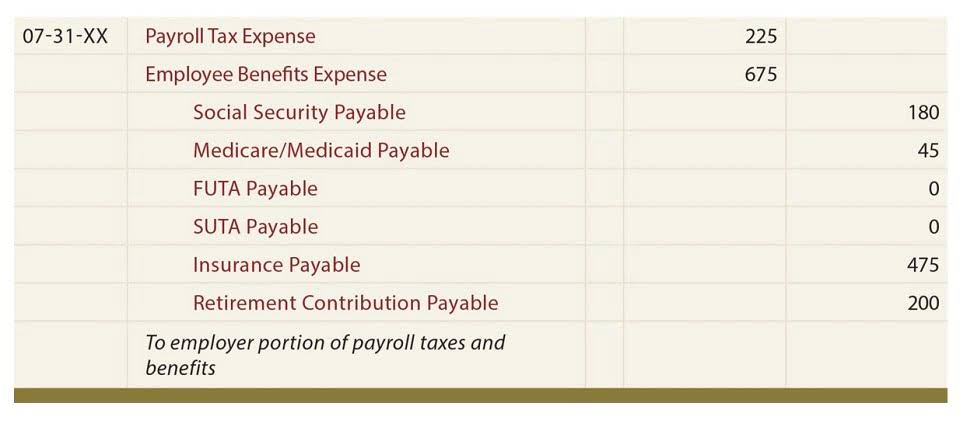
You can obtain a complete management view of the company when reporting on the ledger set. When you log in to your accounting software, you should see your key financial data in visualizations that are easy to understand. You should also have no trouble customizing your dashboard to suit your exact needs.

Inter-entity transaction management
- Tipalti also offers advanced FX products working in combination with its AP automation software for foreign currency conversion into local currency, supporting 30 currencies and transaction hedging.
- The parent company then combines these by adding similar accounts and removing transactions between entities to prevent double counting.
- Strategic planning for entity structure optimization can reduce complexity while achieving business objectives.
- By consolidating financial statements, companies can streamline their accounting operations by reducing the time needed for manual processes and eliminating duplicate data entry.
- The thing is, each of these subsidiaries or business acquisitions has to continue running its own independent finances.
In a multi-entity structure, the parent company may have subsidiaries operating in different countries, each with unique tax obligations, currencies, and regulatory requirements. Multi-entity accounting supports these differences while ensuring that finance teams can still view all of the business’s financials. Accounting for multiple entities centralizes financial oversight while maintaining the individual identity and operational requirements of each entity. Under this approach, each subsidiary or division maintains its own chart of accounts and records daily transactions according to the local regulations and business needs. However, all of the financial data flows into a central platform that can automatically consolidate information and accounting for multiple entities convert currencies to create reports. It ensures legal compliance, allows for accurate performance tracking of individual units, and provides operational clarity.
Financial Consolidation and Reporting

Managing accounting for multiple entities means handling financial statements, intercompany transactions, and regulations carefully. Companies need clear methods for combining data, recognizing challenges, and using effective tools. Lastly, Sage Intacct aids organizations in adhering to various accounting standards and principles. Sage Intacct streamlines the integration of financial statements from various branches or subsidiaries, dramatically reducing manual effort, minimizing errors, HOA Accounting and accelerating the reporting process. This automation ensures that financial leaders can rely on timely, accurate financial reports, crucial for strategic decision-making. Intercompany transaction eliminations are crucial for removing the effects of transactions between companies within the same group.
- Determine whether your businesses need just accounting fundamentals, such as invoicing, or more advanced features, such as the in-depth reports available with higher-end pricing packages.
- The parent includes its equity investment in subsidiaries and reports noncontrolling interests (NCI) separately.
- Users can generate detailed intercompany transaction reports and manage entity relationships from a single dashboard.
- By consolidating the equity accounts, ABC Corporation could accurately report its financial performance and position at any moment.
- This adaptability enables you to expand into new regions or industries, ensuring financial management keeps pace with growth.
Multi-entity accounting tips to close the books faster
While each entity may require specific account modifications, maintaining a common framework enables more efficient data aggregation and analysis. As the accounting landscape evolves, expect more innovations in multi-entity accounting software. Cloud-based solutions will become more common, offering greater flexibility and scalability. Artificial intelligence and machine learning will play a larger role in automating financial processes and providing real-time insights. This table provides a simple overview of each software’s key features, pricing, pros, and cons.
- Combining the right accounting software with financial automation tools like Ramp creates a comprehensive solution that enhances financial transparency, improves efficiency, and supports smarter decision-making.
- Ramp is an all-in-one finance operations platform that can help you manage team-specific budgets and cross-entity transactions on a single platform, eliminating the need for manual reconciliations.
- Additionally, consider both the value you get per dollar spent and whether you can really afford what you’re paying for without excessively stretching your budget.
- This allows you to identify transactions per legal entity and take full advantage of the legal entity accounting features available, such as intercompany accounting.
- These arrangements affect how leases are recorded since the controlling party can influence terms.
- You’ll want access to robust dashboards to glean data-driven insights across multiple entities, along with a shared general ledger that shows your overall performance.
- It is essential to consider several key factors to make an informed decision that aligns with your business needs.
How can multi-entity accounting software help?
The platform guarantees that financial information is always current, empowering leaders with the insights needed for informed decision-making. Organizations must accurately convert foreign transactions into their reporting currency, accounting for fluctuating exchange rates that can significantly impact financial results. This necessitates sophisticated financial tools and expertise to manage currency risks effectively. Multiview provides powerful, easy-to-use financial applications for multi-entity organizations. Whether you want basic consolidation features or want to move toward a single accounting system, we have a solution for you.

You know how challenging it can be to close your books, consolidate financials, and get the visibility you need, especially when you’re managing multiple currencies, jurisdictions, and separate legal entities. Ramp is an all-in-one finance operations platform that can help you manage team-specific budgets and cross-entity transactions on a single platform, eliminating the need for manual reconciliations. By automating expense management and providing real-time reporting, Ramp helps businesses identify spending trends, adjust budgets, and optimize operations across entities. Choosing the right multi-entity accounting software depends on your business’s size, complexity, and unique requirements. These platforms can significantly reduce manual work while improving accuracy and compliance across all your business entities. Your multi-entity accounting software is just one piece of the financial puzzle for multi-entity businesses.
To improve operational efficiency.
By consolidating multiple companies into one entity, investors can ensure their investments are secure. Positive performance in other areas within the consolidated group may neutralize any negative impact on one company. By consolidating the equity accounts, ABC Corporation could accurately https://www.dotclear.fr/miscellaneous-expense-examples-for-small-business/ report its financial performance and position at any moment.
Managing Diverse Currency Transactions
The global accounting software market is projected to have a compound annual growth rate (CAGR) of 10% from 2024 to 2032. This significant growth underscores the increasing reliance on cloud-based solutions for financial management. Likewise, it can also be taxing on the employees responsible for manually entering the data from various business units into a centralized platform. Their workloads can seem unmanageable, eventually leading to feelings of stress and overwhelm if they miss important deadlines or make errors.